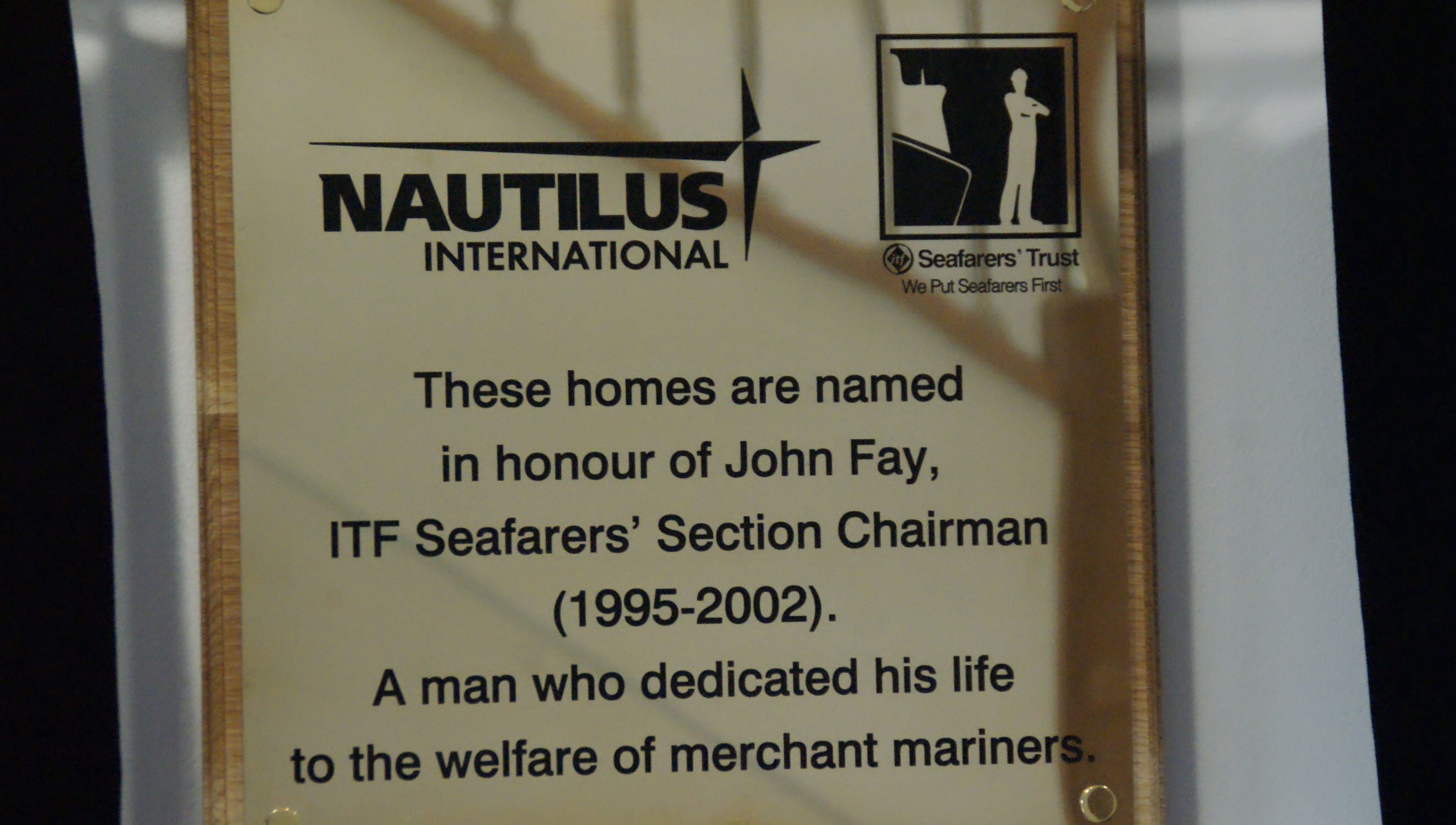Lifelong support for seafarers – the latest developments at Nautilus Mariners’ Park
18 June 2019

There’s something special about the Merchant Navy that makes many seafarers keen to remain part of the maritime community after coming ashore – so it’s not surprising that there’s always a strong demand for places at the Nautilus retirement estate Mariners’ Park. Andrew Linington hears how the Nautilus Welfare Fund is expanding and improving the accommodation it offers
‘It’s brilliant here,’ says former seafarer Michael Brown. ‘You couldn’t ask for anything better – all your needs are catered for. The facilities are fantastic, the scenery is fantastic, and the people are fantastic.’
Mr Brown’s long career at sea included service with Canadian Pacific, Cunard and P&O, and now, in later life, he is one of the first residents to move into John Fay House at Nautilus Mariners’ Park – the 16-acre retirement estate on the banks of the Mersey in NW England.
Named in tribute to a former president of the International Transport Workers’ Federation (ITF) seafarers’ section, John Fay House provides 12 state-of-the-art independent living apartments. All meet the latest standards for accessibility, and each has a balcony or patio and an en-suite wet room, as well as an open-plan fully-fitted kitchen.
The apartments were built with the support of a £600,000 grant from the ITF Seafarers’ Trust, as part of the Nautilus Welfare Fund’s ongoing programme to upgrade and expand services for former seafarers and their dependants.
Nautilus general secretary Mark Dickinson told guests at the opening ceremony that he was proud to see the latest development in the 162-year history of the Union’s welfare work, which brings the total number of homes at Mariners’ Park to 125.
‘We are rightly proud of our past, but we have never sat back and rested on our laurels,’ he pointed out. ‘Mariners' Park bears witness to the process of constant change and reassessment to ensure that we deliver not just quality services, but services that meet the real, changing and increasingly complex needs of our retired members and their partners.’
Dave Heindel, chair of the ITF Seafarers’ Trust board of trustees, said the new building serves as a fitting tribute to John Fay, who first went to sea in 1949 and served with the US Coast Guard and in the US merchant marine before coming ashore in 1956 to work for the Seafarers International Union (SIU).
The facilities are fantastic, the scenery is fantastic, and the people are fantastic
Mr Fay went on to become the SIU’s executive vice-president and served as president of the ITF seafarers’ section between 1995 and 2000. He died in 2005, at the age of 72.
‘John was a very special person, and to name this facility after him is not only fitting for his legacy but also for the work he put in on behalf of seafarers all over the world,’ Mr Heindel continued.
‘The ITF Seafarers’ Trust supports a multitude of welfare projects around the world, and it is important to know that it is there not just for seafarers who are active now but also those in retirement, continuing the tradition of looking out for your fellow seafarers.’
Katie Higginbottom, the head of the ITF Seafarers’ Trust, said the charity was delighted to support the new development at Mariners’ Park and added that she felt a strong personal connection, as her father had been a member of the Union. ‘My mission in the Trust is to learn from great examples such as this, and to do more work with unions to improve seafarers’ welfare around the world,’ she added.

The apartment building was completed earlier this year, and the first residents began moving in during March. The official opening event was attended by three generations of John Fay’s family, and his son, John Fay Jr, said: ‘I can’t begin to put into words the thanks and gratitude of the family. This really is a great honour for my dad and all of us.’
Two of the apartments in the new block were built with a donation from the Aged Veterans Fund and are reserved for merchant seafarers who served alongside the British armed forces at times of conflict or during national emergencies. One of them is Michael Brown, who served on the passengership Uganda when it was requisitioned for the Falklands task force in 1982 and went on to spend two years supporting the Ministry of Defence in the South Atlantic.
Another resident is Mrs Maureen Usher, who moved into her apartment early in March. Her father had been a seafarer, her husband, Kenneth, had served at sea on passengerships, tankers and cargoships, and her son is now a seafarer.
‘I love it here,’ she said. ‘It is very quiet – except when the grandchildren visit – and it feels very secure as well. It’s really nice to be with other residents with connections to the sea, and you get to see other people all the time.’
Tommy Rice, who served with Cunard Line, added: ‘It’s wonderful. It’s like being in a hotel – a first class hotel.’
Mr Dickinson said Nautilus is now looking to the next stage of its welfare services programme: a £20m project to redevelop the neighbouring Andrew Gibson House site. This will not only restore the 113-year-old home – originally built for the widows of seafarers killed at work – but will also provide the Nautilus Welfare Fund with 26 more apartments for retired mariners. ‘We remain steadfast in our determination to carry forward the principles of those who founded the Mercantile Marine Service Association 162 years ago,’ he emphasised.
Tags
